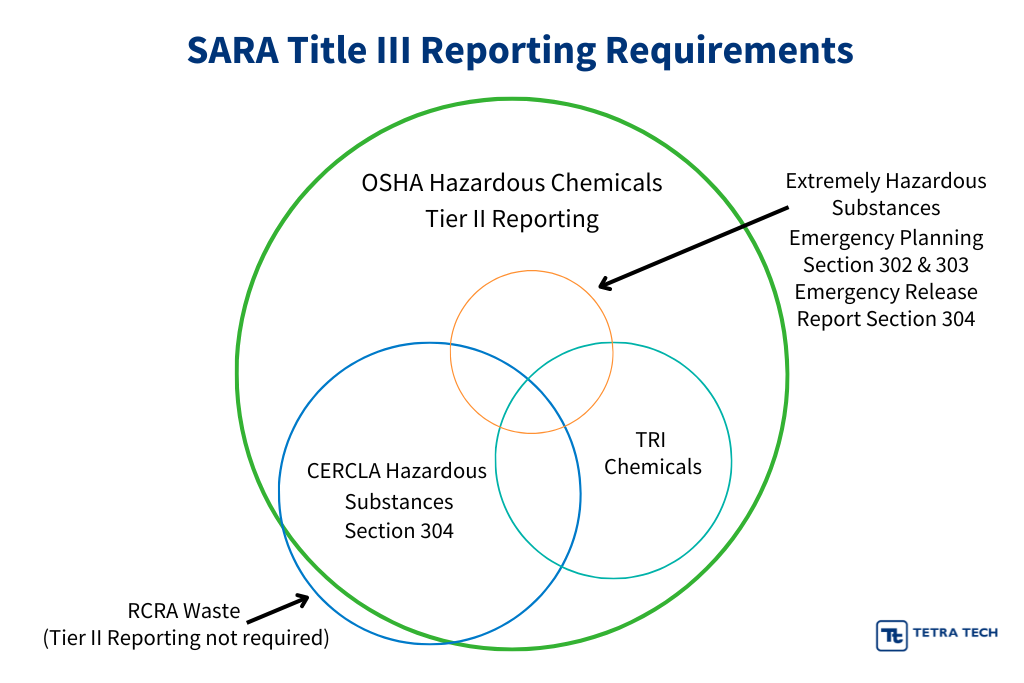Do you have records of all the materials being used or produced at your facility? Keeping track of your facility’s chemical records requirements is crucial to compliance reporting, and it can’t be done without accurate record keeping. You need to know not just what materials (chemicals, products, etc.) you are using, but also what the usage and storage guidelines are and how you should display this information within your facility. Without this knowledge, you may face increased liability and increased costs when it comes to reporting on these materials.
There are many government entities that will steer these regulations such as the Environmental Protection Agency (EPA), the Occupational Safety and Health Administration (OSHA), and various state and local agencies.
Developing a system to keep track of the materials used and stored at your site will help you comply with these safety and environmental regulations more easily and understand how a change in your products or processes may impact your compliance.
OSHA Requirements
OSHA requires employers to provide safe working environments for their employees. This includes protection from hazardous chemicals.
The OSHA Hazard Communication Standard (HCS or HAZCOM) gives workers the right to know and understand the potential risks of hazardous chemicals in the workplace. Under HCS, facilities that manufacture or import chemicals will need to assess the risk of hazards and create labels and safety data sheets (SDSs) for those chemicals.
All hazardous chemicals must be labeled with a clear signal word, a pictogram, and a hazard statement for each hazard class. SDSs must also be maintained and aligned with the Globally Harmonized System of Classification and Labeling of Chemicals (GHS).
Training is also an essential part of meeting OSHA standards. Employees must be trained on how to read and understand labels and SDSs so they can understand potential risks and how to safely handle hazardous chemicals.
EPA Requirements
The EPA regulates the handling, storage, and disposal of hazardous chemicals. To meet EPA regulations, you need to identify hazardous materials at your facility, manage them properly, and dispose of them safely.
The EPA’s Emergency Planning and Community Right-to-Know Act (EPCRA) requires facilities that store and/or use certain chemicals to provide notification and/or reporting to help community response agencies have the information required to prepare and protect their communities against potential risks. SDSs provide vital information that is used in required notification and reporting. Local emergency response entities include:
- State or Tribal Emergency Response Commission (SERC or TERC)
- Local or Tribal Emergency Planning Committee (LEPC or TEPC)
- Local fire department
Facilities with SDSs for chemicals stored and/or used may also be required to submit notifications and/or reports under the Emergency Planning and Community Right-to-Know Act (EPCRA) authorized by Superfund Amendments and Reauthorization Act (SARA) Title III and the Clean Air Act (CAA), Risk Management Program (RMP). These may include:
- EPCRA, Section 311 (Initial Hazardous Chemical Inventory)
- EPCRA, Section 312 (Tier II Reporting)
- EPCRA, Section 313 (Toxics Release Inventory (TRI) Reporting)
- CAA, Section 112(r) (Risk Management Plan for extremely hazardous substances)
Notification and/or reporting is triggered by the quantity thresholds for each regulation.

State Regulations
Standards for the handling of hazardous chemicals will vary by state, but generally they closely follow OSHA and EPA regulations. However, you should be aware that some states may have stricter regulations.
If your state does have different regulations than the federal regulations, you will need to make sure you are meeting both sets of standards. State regulations cannot be less strict than its federal counterpart, and a state with delegated authority has authorization from the corresponding federal agency.
Establishing an Efficient Records System
If you don’t know what chemicals you use and store at your facility, it will not be possible to meet regulations (including recording keeping and reporting requirements), and it could lead to fines and penalties, put your employees at risk, and damage your company’s reputation.
To meet OSHA, EPA, and state hazardous chemical (material) regulations, you should establish an efficient system for tracking your on-site hazardous chemicals and their records requirements.
First, create an inventory system that will help you always know what chemicals are being processed or used on-site. Make sure this not only accounts for what is already being used, but also puts systems in place for adding new chemicals to the inventory and removing chemicals when they are no longer used or stored onsite.
Next, develop a management plan for handling those chemicals. Make sure you understand what requirements you will need to meet and how long records will need to be maintained. Create the necessary labels and SDSs for your hazardous chemicals, and establish a clear workflow and chain of communication for managing existing chemicals and any new hazardous chemicals introduced to your facility.
Be sure to also include training for your employees in your compliance plan. Make sure workers at your facility understand the hazards of the materials they handle and how they should safely handle these materials.
Get Support from Tetra Tech
How your facility handles hazardous chemicals is essential not just for your environmental compliance, but for the basic safety of your employees. If you need help understanding your chemical records requirements or establishing a management plan for your facility’s hazardous chemicals, contact Tetra Tech at [email protected]. Our compliance experts can help you create strategies for keeping track of your chemicals so you can easily meet your compliance requirements.






